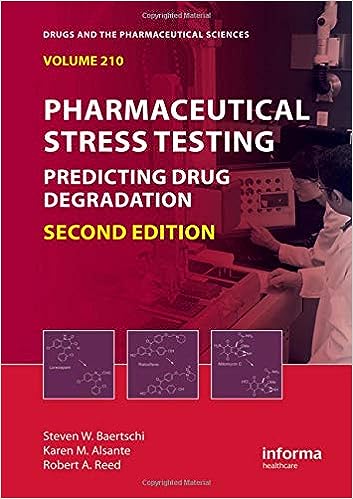Understanding FDA and EMA Guidelines for Packaging Material Stability Testing
Introduction
Packaging plays a crucial role in maintaining the stability, quality, and efficacy of pharmaceutical products. Regulatory agencies like the FDA and EMA emphasize stringent guidelines for packaging material stability testing to ensure the integrity of drug products throughout their shelf life. This article explores the FDA and EMA requirements for packaging material stability testing, highlighting their importance, key components, and compliance strategies for global pharmaceutical manufacturers.
Why Is Packaging Material Stability Testing Important?
Packaging material stability testing evaluates the interaction between a drug product and
- Product Integrity: Packaging protects the product from contamination, moisture, oxygen, and light.
- Regulatory Compliance: Adherence to guidelines is mandatory for market approval in regions governed by FDA and EMA.
- Patient Safety: Prevents the leaching of harmful substances from packaging materials into the drug product.
FDA Guidelines for Packaging Material Stability Testing
1. Regulatory Framework
The FDA’s stability testing requirements for packaging materials are outlined in 21 CFR 211.94. Key components include:
- Material Compatibility: The container-closure system must not interact with the drug product in a way that alters its safety, identity, strength, quality, or purity.
- Protection: Packaging must shield the product from environmental factors like light, moisture, and air.
- Performance Testing: Testing must demonstrate that the packaging maintains integrity throughout the product’s shelf life.
2. Extractables and Leachables (E&L) Testing
The FDA requires comprehensive E&L testing to assess the potential for harmful substances to migrate from the packaging into the drug product. Key steps include:
- Identifying extractable compounds using aggressive solvents and high temperatures.
- Measuring leachables under real-world storage conditions.
Tip: Use validated analytical methods such as liquid chromatography and mass spectrometry for accurate E&L testing.
3. Stability Testing Integration
Packaging material stability testing must be integrated with the drug product’s overall stability program. This includes evaluating:
- Moisture permeability of containers.
- Light transmission properties for light-sensitive drugs.
- Impact of storage conditions (e.g., temperature, humidity) on packaging performance.
EMA Guidelines for Packaging Material Stability Testing
1. Regulatory Framework
The EMA’s guidelines for packaging materials are detailed in the European Pharmacopoeia and related stability testing documents. Key requirements include:
- Material Safety: Packaging materials must comply with safety standards, ensuring no migration of toxic substances.
- Functional Suitability: Demonstration that the packaging system maintains drug quality and efficacy under specified conditions.
- Compatibility Studies: Testing to confirm no adverse interactions between the packaging and the drug product.
2. Focus on Container-Closure Integrity
The EMA emphasizes container-closure integrity (CCI) to ensure packaging prevents contamination. Testing methods include:
- Dye Ingress Testing: Detects leaks by observing dye penetration.
- Vacuum Decay Testing: Identifies packaging defects by measuring pressure changes.
Tip: Perform CCI testing during initial stability studies and periodically throughout the product’s lifecycle.
3. Photostability Testing
Packaging for light-sensitive drugs must undergo photostability testing as per ICH Q1B. This ensures the packaging adequately protects the drug from light-induced degradation.
Comparison of FDA and EMA Guidelines
While FDA and EMA guidelines share common principles, there are differences in focus and implementation:
- FDA: Emphasizes extractables and leachables testing and aligns with USP standards for packaging materials.
- EMA: Focuses on container-closure integrity and compliance with European Pharmacopoeia standards.
Tip: Design packaging material stability testing protocols to address both FDA and EMA requirements for seamless global submissions.
Challenges in Packaging Material Stability Testing
Manufacturers face several challenges in meeting FDA and EMA guidelines:
- Resource-Intensive Testing: Comprehensive E&L testing and CCI studies require significant time and investment.
- Regulatory Variability: Differences in regional guidelines may necessitate additional studies for multi-regional submissions.
- Advanced Equipment: High-cost analytical tools are often required for accurate testing.
Tip: Partner with specialized testing laboratories to overcome resource and expertise limitations.
Best Practices for Compliance with FDA and EMA Guidelines
To ensure compliance with FDA and EMA packaging material stability testing requirements, manufacturers should adopt the following best practices:
- Plan Early: Integrate packaging material testing into the initial development stages to identify potential issues early.
- Use High-Quality Materials: Select materials that meet global safety and compatibility standards.
- Validate Methods: Ensure all testing methods are validated for accuracy and reproducibility.
- Engage Regulators: Consult with FDA and EMA representatives to clarify requirements and address ambiguities.
- Document Thoroughly: Maintain detailed records of testing protocols, results, and deviations for regulatory submissions.
Emerging Trends in Packaging Stability Testing
Innovations are reshaping packaging material stability testing practices:
- Digital Tools: Advanced data management systems improve the accuracy and efficiency of stability testing.
- Sustainable Packaging: Increasing use of eco-friendly materials requires additional stability testing to ensure compliance.
- AI Integration: Artificial intelligence tools are being used to predict packaging performance and identify potential stability risks.
Conclusion
Packaging material stability testing is a critical component of regulatory submissions, ensuring that drug products remain stable and effective throughout their shelf life. By adhering to FDA and EMA guidelines, conducting comprehensive studies, and leveraging advanced technologies, manufacturers can achieve compliance and gain approval in global markets. With careful planning and adherence to best practices, packaging stability testing can enhance product quality, patient safety, and regulatory success.
